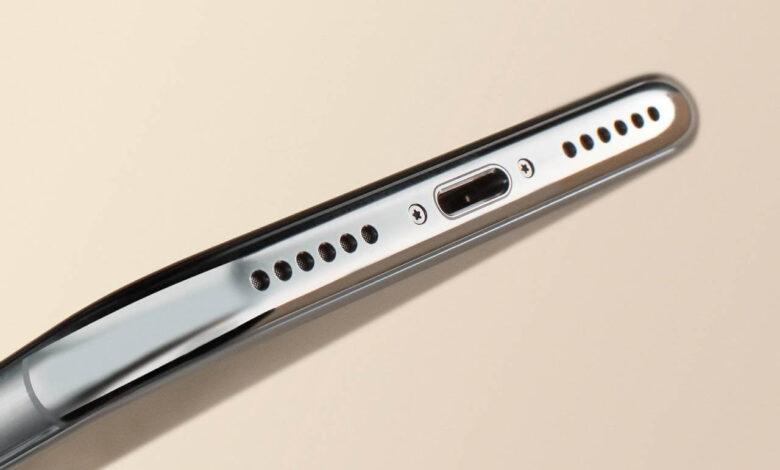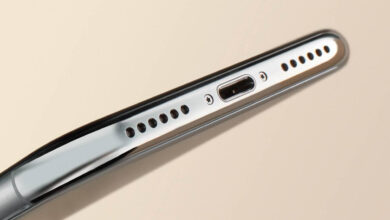How Loud is a Cell Phone Speaker: Understanding Volume Limits

Cell phone speakers have come a long way, and you might be curious about just how loud they can get. While you’re not going to use your phone to DJ a party, the volume and quality of sound that modern smartphones produce might surprise you. Phone speakers today are designed to deliver clearer audio, richer bass, and higher volume than their predecessors.
The volume of phone speakers is often measured in decibels (dB), and smartphone speaker wattage typically ranges between 1.5 watts for older models up to around 3 watts for the latest, high-end phones. To put it into context, a phone’s speaker loudness isn’t just about the wattage; design and software optimizations play significant roles in how sound is projected and perceived.
Models like the Samsung Galaxy S23 Ultra, for example, have received positive feedback for their audio performance, indicating enhancements from previous models. Meanwhile, other phones are praised for their authentic sound reproduction, like Google’s Pixel 6 Pro which continues to be noted for its audio quality even alongside newer models. So, when we talk about a cell phone’s speaker loudness, we’re assessing a mix of technical specs, user experience, and the various ways manufacturers fine-tune their devices to deliver the best audio possible.
Understanding Sound Measurements
When you’re comparing the loudness of different cell phone speakers, knowing how to interpret sound measurement terms is crucial. These terms will help you understand how loud a speaker can potentially get.
Decibels and Sound Pressure
Decibels (dB) measure the intensity of sound, with the scale being logarithmic rather than linear. This means that every increase by 10 dB is perceived as approximately twice as loud to your ears. Sound pressure level (SPL) is the pressure wave produced by the speaker and is also measured in decibels. For example, if a speaker has an SPL rating of 80 dB, it means that at a specific voltage and distance, it produces a sound as intense as the SPL value.
| Sound Source | Decibel Level |
|---|---|
| Whisper | 30 dB |
| Normal Conversation | 60 dB |
| Busy Traffic | 85 dB |
| Cell Phone Speaker | 70-90 dB |
Comparative Examples
To give you a better understanding, a quiet room is typically around 30 dB, while a normal conversation is around 60 dB. Most cell phone speakers can produce a sound between 70 dB and 90 dB. This level of sound pressure is adequate for personal entertainment in relatively close proximity.
- 70 dB: Hearing a cell phone speaker at this level is similar to having a conversation in a restaurant.
- 90 dB: At this level, the speaker sounds as loud as a lawn mower engine, implying a relatively high volume for a phone speaker.
Cell Phone Speaker Ratings
When looking at cell phone speaker ratings, you’ll often see them represented in maximum output decibels. For instance, an iPhone 12 speaker can reach up to around 120 dB, but commonly, you’ll experience the sound output at lower decibel levels since such high volumes are often uncomfortable for extended listening.
Remember to consider both the dB rating and the context in which you’ll be using your phone’s speaker. Higher ratings mean the speaker can be louder, but the actual loudness you’ll experience depends on the environment and volume settings.
Cell Phone Speaker Specifications
When you’re checking out the specs for a cell phone’s speaker system, you should know about the drivers, power output, and frequency response. These factors define how your music and audio will sound.
Speaker Drivers
Speaker drivers are the heart of your smartphone’s audio system. They convert electrical energy into sound waves that you can hear. Typically, the size of a driver in a smartphone speaker varies from a small fraction of an inch to around an inch. Bigger drivers usually produce better sounds, but with the constraints of a phone’s slim profile, manufacturers often have to balance size with sound quality.
Power Output Measurement
The power output, measured in watts, indicates how much electrical power a speaker can use to convert into sound. For most smartphones, you’ll find speakers with power output ranging from 1.5 W to 3 W. This might not seem like much compared to home audio systems, but for the limited size of a phone, it is sufficient to deliver clear sound at moderate volumes.
Frequency Response
Frequency response refers to the range of audio frequencies the phone’s speaker can reproduce. It’s usually represented by a range, say 20 Hz to 20,000 Hz, which is the range of human hearing. The wider the range, the better the ability of the speaker to reproduce both low (bass) and high (treble) sounds. Specs might not always tell the full story, so looking for user and professional reviews can also be helpful to understand real-world performance.
Impacts on Perceived Loudness
Your smartphone’s speaker might seem louder or quieter depending on various factors. Let’s explore how different aspects can influence your experience of loudness.
Environment and Background Noise
In a noisy environment, your phone’s speaker volume may appear inadequate due to the surrounding sounds. Background noise can significantly mask your phone’s audio output, making it difficult to hear:
- Quiet environments (library, office): Phone speakers sound clearer and louder.
- Noisy environments (subway, street): Speakers seem quieter and less distinct.
Phone Casing and Material
The design and materials used in your phone’s casing play a crucial role in sound amplification.
- Materials: Metal or glass-backed phones may resonate sound differently than plastic.
- Speaker placement: Front-facing speakers often sound louder to you than rear-facing ones.
Software Limitations
Software on your phone can limit or enhance speaker loudness:
- Volume Limit Settings: Protects your ears by restricting maximum volume.
- Equalizer Adjustments: Can make speakers seem louder by boosting specific frequencies.
Maximizing Cell Phone Volume
When you want to get the most out of your cell phone’s sound capabilities, several options can help you enhance the volume output beyond its standard range.
Volume Enhancement Apps
Installing an app designed to increase volume can make a significant difference. These apps usually work by adjusting your phone’s equalizer settings and amplifying sounds. Be cautious as excessive volume may affect your hearing or damage the phone’s speakers.
External Speakers
For a more powerful audio experience, consider using external speakers. They can connect to your phone via Bluetooth or a wired connection, offering a higher decibel level and often richer sound quality. Foldable or compact designs make them convenient to carry around.
Audio Accessories
Audio accessories such as headphones or earbuds can also improve your listening experience. They provide direct sound to your ears and can come with additional features like noise cancellation. If your speakers aren’t performing well due to water damage, you may find it useful to eject water from your phone’s speakers to restore volume quality.
Health and Safety Considerations
When it comes to your cellphone’s speaker, your hearing health is a priority. It’s crucial to be aware of the volume levels and duration of exposure to sound.
Hearing Protection
Your ears can handle certain levels of sound without risk, but cellphone speakers can exceed safe listening levels. It’s important to note that prolonged exposure to sounds above 85 decibels (dB) can potentially harm your hearing. Remember, hearing protection isn’t just about volume; it’s also about how long you listen.
- Use Earplugs: If you find yourself in a situation where you can’t control the volume, such as a loud environment, consider using earplugs to reduce sound levels.
- Volume Control: Moderation is key. On most devices, keeping your volume under 60% is a good benchmark.
Safe Listening Practices
Listening safely involves more than volume control; it’s about making conscious choices to protect your ears over time.
- Follow the 60/60 Rule: Limit your use of a cellphone speaker at high volumes to 60 minutes at a time.
- Rest Your Ears: After exposure to higher volumes, give your ears time to recover by enjoying periods of silence.
Noise-Induced Hearing Loss
Your behavior concerning cellphone speaker use can significantly influence the risk of noise-induced hearing loss (NIHL). Changes in hearing sensitivity due to loud sounds may not be immediately noticeable, but they can accumulate over time.
- Understand the Signs: Early signs of NIHL include tinnitus (ringing in the ears) or a feeling of fullness in the ears after loud exposure.
- Seek Professional Advice: Regular hearing check-ups with an audiologist can help detect changes early, and they can provide strategies for protecting your hearing.
Regulatory Standards and Compliance
In this section, you’ll learn about the various standards and regulations that cell phone speakers must adhere to. These are important for both safety and environmental considerations.
International Standards
UL Standards: Your cell phone speakers must conform to safety standards, which could include UL standards such as:
- UL 1642: For Lithium Batteries
- UL 60950-1: General Safety Requirements for Information Technology Equipment
- UL 62133: Safety Requirements for Portable Sealed Secondary Cells
- UL 2054: Standards for Household and Commercial Batteries
These international standards ensure that your device is safe to use and that the batteries within don’t pose a fire hazard or risk to your health.
Industry Guidelines
FCC Compliance: If you’re in the United States, the Federal Communications Commission (FCC) is a key regulatory body. For your Bluetooth cell phone speaker:
- FCC Certification: Required for most intentional radiators, which include Bluetooth speakers.
- Labels: Devices must bear labels for easy FCC identification and tracking.
This means that the cell phone speaker you use has received approval according to FCC guidelines, ensuring it doesn’t cause harmful interference with other wireless services.
Consumer Protection
Noise Control Act: Beyond technical specifications, consumer health is also a priority. The Noise Control Act of 1972 aims to protect Americans from noise that may jeopardize their health and welfare. This act emphasizes:
- The importance of informing the public about the noise emission and noise reduction characteristics of products.
Your cell phone speaker is subject to regulations that take your well-being into account, making sure that the sound levels are not harmful to your health.
